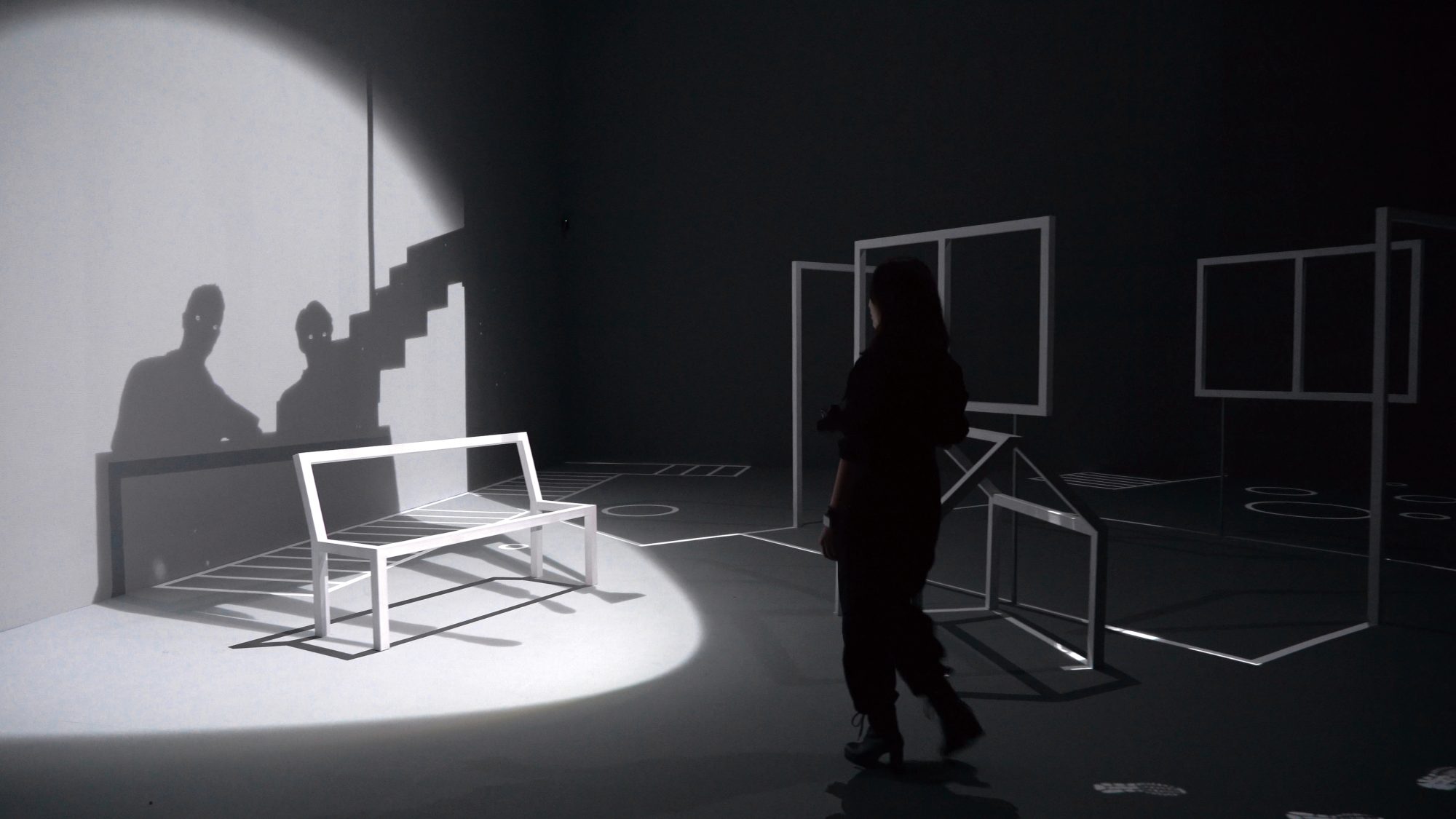25th Art Division Excellence Award
Augmented Shadow – Inside
Interactive art
MOON Joon Yong[South Korea]
Outline
An immersive installation that projects shadows on a stage with a floor of 10 x 10 meters and walls of 6 meters. The viewpoint of the 3D projection is set by tracking the movement of the lighting device to project life-size shadow figures. Objects such as doors, windows, walls, and chairs are placed on the stage, and their shadows connect the real world and “virtual” scene. The audience participates in the story by illuminating the world constructed by the two with the device in their hands. They meet and interact with the shadowy figures that appear in the “virtual” scene on stage. The shadow’s bodies are not actually visible, but looking out the window from the center of the stage, their full-colored “real” world can be glimpsed. The viewer is observing them from the real world, but it is revealed that they are also observing the viewer from their “reality.” At the same time, the work is composed so that other spectators are also observing the stage from the outside. In this way, the viewer realizes that they also are part of the story.
Reason for Award
Shadows are an optical phenomenon that is mysterious and ephemeral. Once projected onto a specific surface, they can release symbolic and emotional forces. In some cases, they illustrate meaningful spatial relationships and create a certain tension. Shadows are the origin of cinematic experience and have been utilized and enjoyed since ancient times. As an extension of this long tradition, the artist created this immersive art installation in which virtual and real elements meet in a world of black and white through augmented reality technology. With a flashlight-like device, audiences explore and become a part of a multi-layered space. A tracking device superimposes virtual shadows on shadows of real people or objects. They can make eye contact with virtual humans in the world of shadows at times, giving a sense that the images of those virtual humans are looking back at them. This work presents a vision for the future of the moving image, like the moment when characters in GODARD’s films try to interact with viewers. (Christophe CHARLES)



